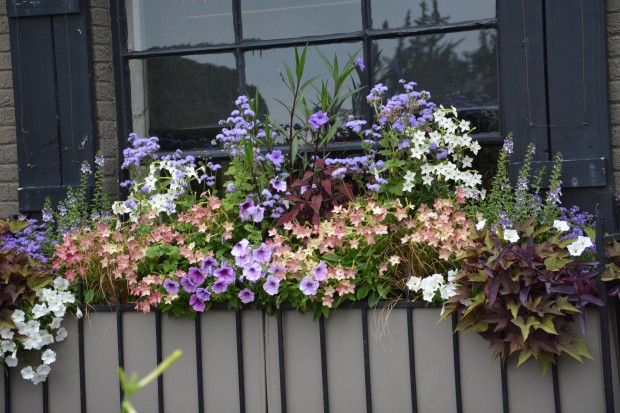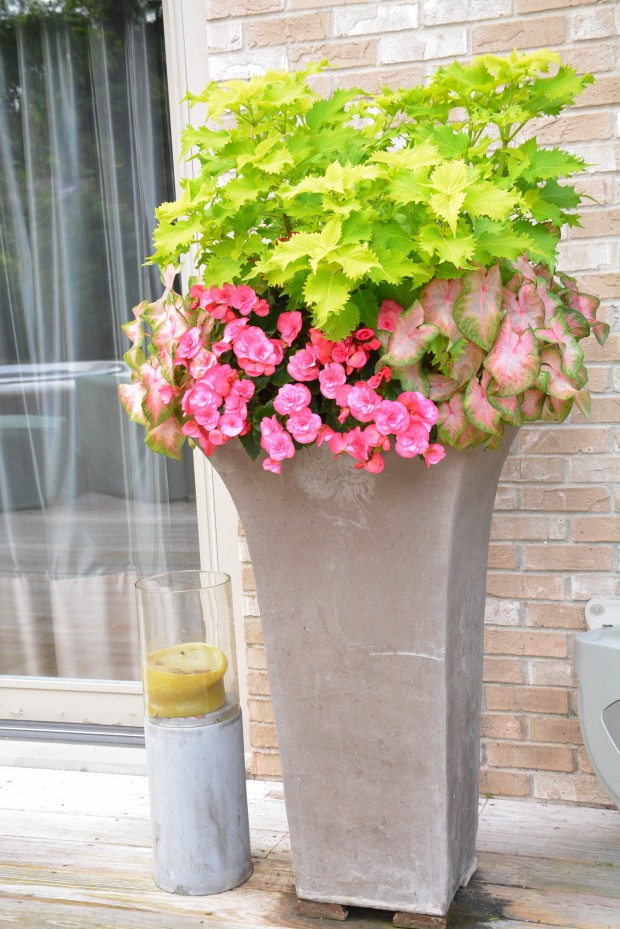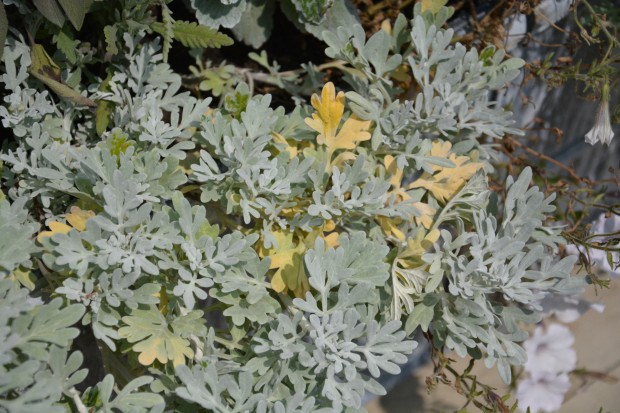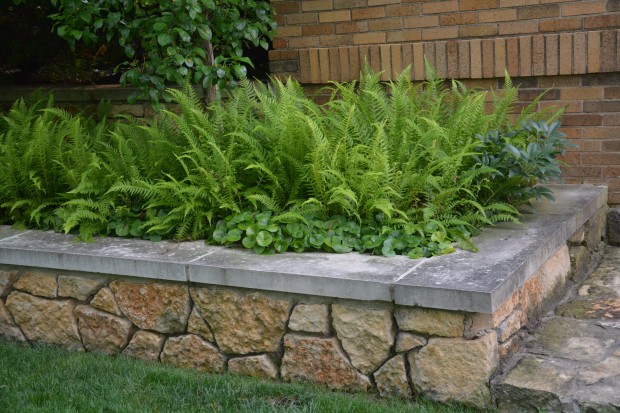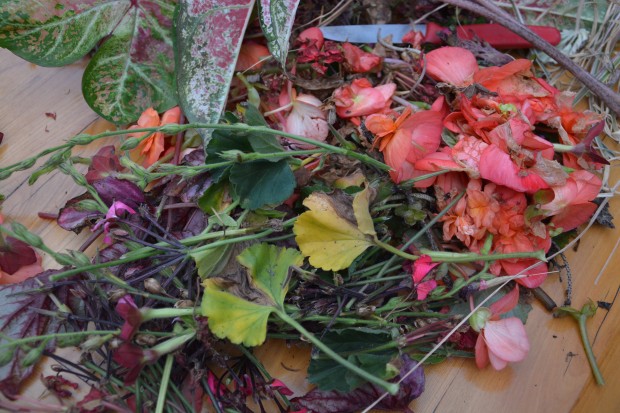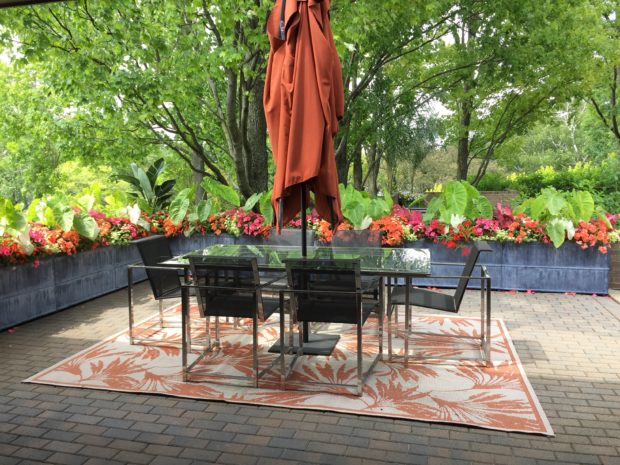 Waiting to plant seasonal containers until the soil and night temperatures warm up in our zone is an idea of considerable merit. For those of you that read this journal regularly, you already know my point of view. Here me out, again. If you are a client, you have heard me talk about how the best place for tropical plants in May is a greenhouse. Tropical plants that hail from tropical environments have evolved to not only withstand a tropical climate, they thrive in it. Michigan is anything but tropical. Just a week ago we were having night temperatures in the mid to low 50’s. Tropical plants do not like nor are they likely to adapt to our brisk spring weather. Our spring is just about the equivalent of winter weather to an alocasia, or a solenia begonia in May. May is when gardeners want to plant their containers, but June is better.
Waiting to plant seasonal containers until the soil and night temperatures warm up in our zone is an idea of considerable merit. For those of you that read this journal regularly, you already know my point of view. Here me out, again. If you are a client, you have heard me talk about how the best place for tropical plants in May is a greenhouse. Tropical plants that hail from tropical environments have evolved to not only withstand a tropical climate, they thrive in it. Michigan is anything but tropical. Just a week ago we were having night temperatures in the mid to low 50’s. Tropical plants do not like nor are they likely to adapt to our brisk spring weather. Our spring is just about the equivalent of winter weather to an alocasia, or a solenia begonia in May. May is when gardeners want to plant their containers, but June is better.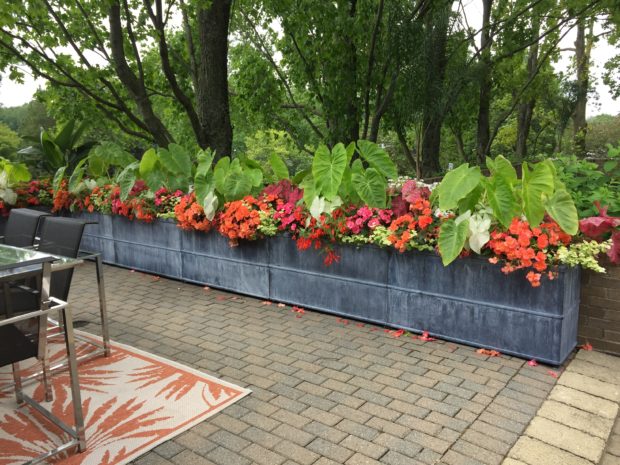 Tropical plants that go into the ground in anticipation of better weather to come will sulk, be set back, or refuse to grow. I shudder, and have to avert my eyes when I see those huddled masses of fibrous begonias bedded out in commercial settings the first freezing week of May. I am a proponent of planting containers, if only a few key containers, for spring – in an effort to stave off that longing for a summer planting until the time is right. The summer solstice, or longest day of the year, in the northern hemisphere is June 21. Planting summer containers in June helps make a success of all of the work of planting those containers.
Tropical plants that go into the ground in anticipation of better weather to come will sulk, be set back, or refuse to grow. I shudder, and have to avert my eyes when I see those huddled masses of fibrous begonias bedded out in commercial settings the first freezing week of May. I am a proponent of planting containers, if only a few key containers, for spring – in an effort to stave off that longing for a summer planting until the time is right. The summer solstice, or longest day of the year, in the northern hemisphere is June 21. Planting summer containers in June helps make a success of all of the work of planting those containers.
 Nothing tells a story more succinctly and simply than a picture. These boxes, as well as all the rest of this client’s containers, were planted on June 2. In 28 days, all of these heat loving plants have grown exponentially. Calocasis, begonias of several types, caladiums and licorice like warm soil, and warm temperatures. A good bit of the pleasure of tending containers comes from a collection of plants that are healthy, happy, and growing. In the healthy, happy and growing department, a lot of credit goes to my client Fred P. He is in charge of the watering of all of their container plantings. His watering skill is obvious. The only condition under which begonias fail to thrive is too heavy watering hand. He waters the solenia begonias only when they are truly dry. Their thick succulent stems will rot with too much water. He tells me it takes all of his willpower to water each plant in this series of boxes individually, but his restraint has paid off. He tell me that he precision waters of of their containers. He never blankets any of his containers with water. The gorgeous state of all of his container plants is a sure sign of his attention to the individual needs of his seasonal plants. These planters look sensational. It is my opinion that when he waters, he focuses only on that task at hand, and nothing else. Another word for that is relaxation. Another concept for this is that growing plants is good for people. A June planting, a master waterer, and some warm soil and heat-voila.
Nothing tells a story more succinctly and simply than a picture. These boxes, as well as all the rest of this client’s containers, were planted on June 2. In 28 days, all of these heat loving plants have grown exponentially. Calocasis, begonias of several types, caladiums and licorice like warm soil, and warm temperatures. A good bit of the pleasure of tending containers comes from a collection of plants that are healthy, happy, and growing. In the healthy, happy and growing department, a lot of credit goes to my client Fred P. He is in charge of the watering of all of their container plantings. His watering skill is obvious. The only condition under which begonias fail to thrive is too heavy watering hand. He waters the solenia begonias only when they are truly dry. Their thick succulent stems will rot with too much water. He tells me it takes all of his willpower to water each plant in this series of boxes individually, but his restraint has paid off. He tell me that he precision waters of of their containers. He never blankets any of his containers with water. The gorgeous state of all of his container plants is a sure sign of his attention to the individual needs of his seasonal plants. These planters look sensational. It is my opinion that when he waters, he focuses only on that task at hand, and nothing else. Another word for that is relaxation. Another concept for this is that growing plants is good for people. A June planting, a master waterer, and some warm soil and heat-voila.
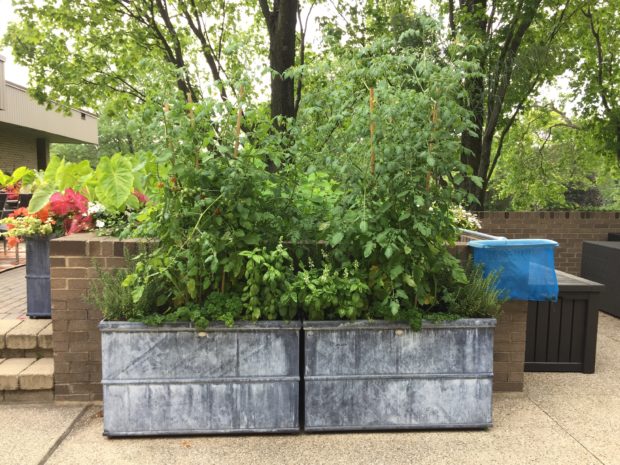 No plant hates the cold and windy weather more than tomatoes. The size and health of these plants makes it obvious the conditions for growth were right. The basil looks terrific. These tomatoes were 18″ tall when we planted them. The basil were maybe 4″ tall. Summery conditions have enabled them to grow.
No plant hates the cold and windy weather more than tomatoes. The size and health of these plants makes it obvious the conditions for growth were right. The basil looks terrific. These tomatoes were 18″ tall when we planted them. The basil were maybe 4″ tall. Summery conditions have enabled them to grow.
 The Black and Blue salvia in the centers of these two boxes grow to 40″ tall, and need nearly a season’s worth of time to get to their peak. But I see some signs of early blooms. Happy salvia. As long as the solenia begonias are not over watered, they will bloom profusely into the fall.
The Black and Blue salvia in the centers of these two boxes grow to 40″ tall, and need nearly a season’s worth of time to get to their peak. But I see some signs of early blooms. Happy salvia. As long as the solenia begonias are not over watered, they will bloom profusely into the fall.
 New Guinea impatiens are as notoriously adverse to cold weather as are calocasias. Unsurprisingly, New Guinea impatiens are native to New Guinea – the second largest island in the world which is located the the southwest Pacific Ocean. Needless to say, New Guinea is a tropical place. These New Guinea natives look incredibly happy here. Planted green in 4″ pots, they have grown an incredible amount in 28 days, and are now blooming profusely.
New Guinea impatiens are as notoriously adverse to cold weather as are calocasias. Unsurprisingly, New Guinea impatiens are native to New Guinea – the second largest island in the world which is located the the southwest Pacific Ocean. Needless to say, New Guinea is a tropical place. These New Guinea natives look incredibly happy here. Planted green in 4″ pots, they have grown an incredible amount in 28 days, and are now blooming profusely.
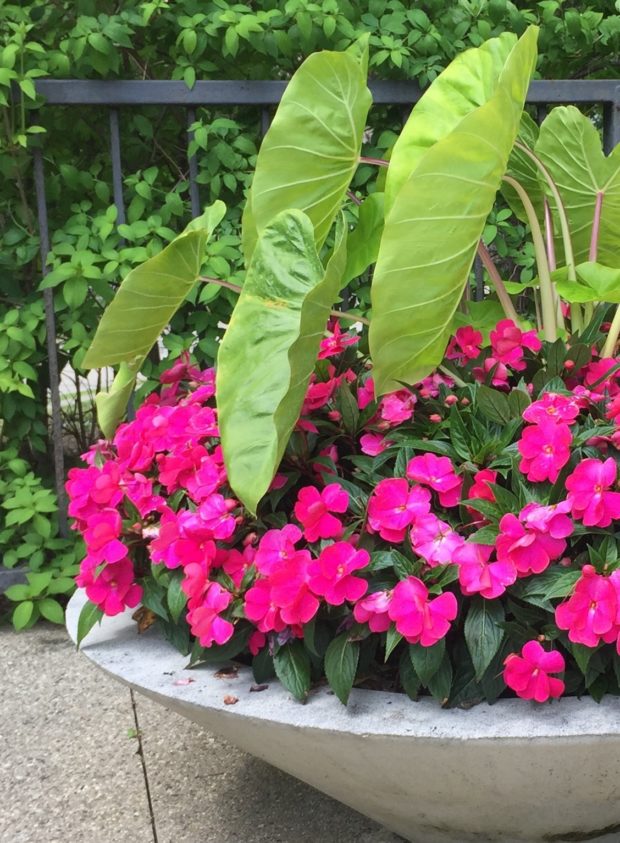 There are so many types of gardening-too many to list. To name a few: There are those growers of dwarf conifers, and those gardeners who grow vegetables, and those farmers who grow cut flowers or broom corn. Those people for whom a perennial garden is a continuing source of interest and delight rub shoulders with those gardeners who grow bananas, palms and herbs. Do not forget those who plant trees, or roses, and those who collect cultivars of hydrangeas. Those who plant seasonal containers, and those who plant shade or wildflower gardens have the same issues as those who grow dahlias, rock garden plants or meadow gardens. The common thread? Plants are very specific about what they need. A gardener who is alerted to and caters to the requirements of the plants will be a successful gardener.
There are so many types of gardening-too many to list. To name a few: There are those growers of dwarf conifers, and those gardeners who grow vegetables, and those farmers who grow cut flowers or broom corn. Those people for whom a perennial garden is a continuing source of interest and delight rub shoulders with those gardeners who grow bananas, palms and herbs. Do not forget those who plant trees, or roses, and those who collect cultivars of hydrangeas. Those who plant seasonal containers, and those who plant shade or wildflower gardens have the same issues as those who grow dahlias, rock garden plants or meadow gardens. The common thread? Plants are very specific about what they need. A gardener who is alerted to and caters to the requirements of the plants will be a successful gardener.
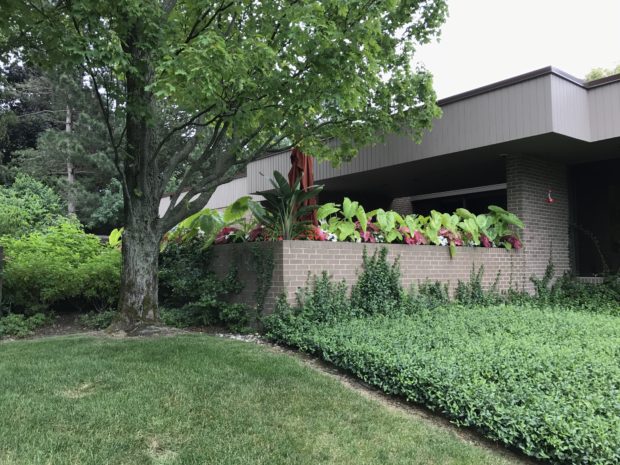 A June planting was an optimal time to plant this particular collection of plants. The plants have responded in kind to that early summer date. Even the view from the outside is a treat.
A June planting was an optimal time to plant this particular collection of plants. The plants have responded in kind to that early summer date. Even the view from the outside is a treat.



